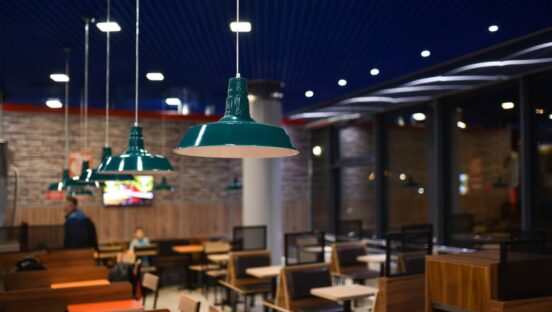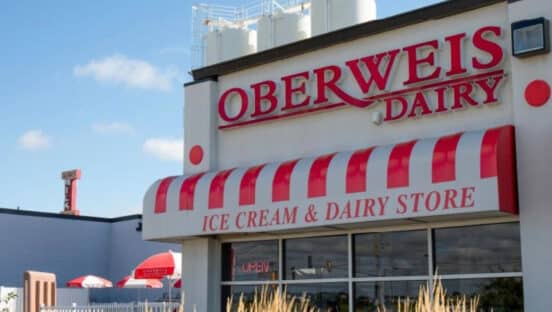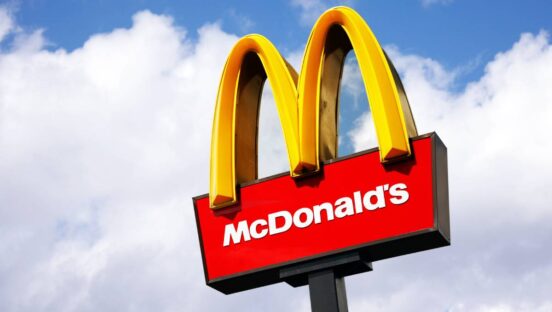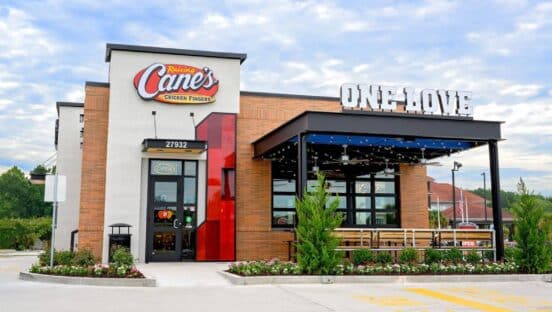At the outset of the pandemic, lines defining the traditional three dayparts quickly began to blur at la Madeleine.
Those who traditionally picked up coffee and pastries on their way to the office trickled in later as they shifted to working from home instead of the office. Likewise, the dinner rush began earlier in the afternoon as people picked up meals as part of their afternoon errands.
“It all became a little blurry,” says Kerri McLeroy, senior marketing director for the 80-unit brand, “and those structured dining habits were kind of thrown off.”
With the widespread availability of vaccines and the abandonment of public health orders in the spring, la Madeleine saw a reemergence of customers’ pre-pandemic rituals. Lunch dine-in visits reached near 2019 levels, the share of to-go orders dropped back down and catering business improved.
“We are getting closer and closer to pre-pandemic,” McLeroy says. “But I think working from home and working virtually is always going to be a thing.”
That’s evidenced by the increasing numbers of customers who set up shop in cafes. They stick around for hours, sometimes placing multiple orders as they work on their laptops.
Like other brands, la Madeleine relied on multiple tactics to serve customers through the pandemic. It implemented a delivery service, benefited from its line of retail packaged goods and even shifted advertising dollars away from drive-time radio to digital avenues. While the company is watching whether employers bring workers back to offices, the pandemic experience left leaders confident they can still reach customers whether they are commuting to a traditional workplace or staying at home.
“I think because we are set up with all these different sales and traffic channels, it’s not as concerning as if we were only a dine in place,” she says. “If consumer behavior is not going to go back to pre-pandemic we have to evolve our sales and traffic channels. So, I think it’s a concern but it gives us an opportunity to implement more channels.”
Aside from obliterating much of the dine-in business, coronavirus hit restaurants, particularly quick-service and fast-casual concepts, by disrupting longstanding commuter patterns. When millions of Americans stayed home rather than going into the office, they also ditched morning coffee runs, drive-thru breakfast sandwiches, and lunches out.
The rise of vaccines helped revive some of those routines. But after employers saw their workers could be productive at home offices or dining room tables, many are now preparing for a future with more people than ever working at home—on a permanent basis.
Restaurants intentionally clustered around high-density office parks, particularly independent operators, will see the biggest challenges, says Gary Stibel, managing partner and principal at the New England Consulting Group. But that will create more opportunity for suburban locations located closer to homes.
Even for all the changes ushered in by the pandemic, Stibel expects more and more people to return to traditional workplaces. But people now expect to pick up or get their lunch delivered in a matter of minutes, rather than waiting an hour or more the way they previously did in the office.
“The pendulum will swing back but not all the way back,” he says. “Habits are hard to change.”

A major bright spot for restaurants is the pent-up demand created by the pandemic. People are simply tired of staying home. So even if more are pushed to a permanent work from home reality, they are more likely than ever to seek socialization at restaurants and bars in their down time.
“We get bored when we do the same thing over and over and over again, and staying at home and not getting out is boring,” Stibel says. “Humans are going to want to get out and see other humans.”
That means big chains should think about positioning their suburban locations to appeal to cooped up workers looking for a break or change of scenery.
“If I’m Starbucks, I’m really starting to think about all my suburban locations, especially if they’re near major cities, about what I can do to lure those people in for a few hours,” says Ethan Chernofsky, marketing vice president for Placer.ai, a location data analytics firm.
Placer.ai technology examined traffic at morning-heavy Starbucks, finding the share of daily traffic between 6 and 9 a.m. dropped from 9.3 percent at the beginning of 2020 to 7.6 percent during the first months of 2021.
“A drop like that is very, very significant,” he says. “Think what 2 percent means for a brand with that type of visitation. So, it is a really massive difference. Small percentage changes at big brands are big changes.”
Placer.ai data already shows a significant rebound in morning traffic at breakfast-heavy Dunkin’ and Starbucks—contradicting predictions that consumer behavior would be forever altered by 2020’s disruptions.
“What we’ve seen is that that is fundamentally not true. Our world, our way of life is very much dictated by the routines that we build,” Chernofsky says. “I don’t buy that there’s going to be a massive shift and I buy it less than I ever did.”
At Bojangles, the breakfast hours remained strong through 2020 as many essential workers still stopped by on their commutes. Dayparts have always overlapped at the Southern chicken and biscuit concept that serves breakfast all day.
But the pandemic did create renewed interest in family meal solutions like the brand’s Big Bo Box, a bucket of fried accompanied by side dishes and a beverage.
“Consumers have rediscovered their families over the past year,” CMO Jackie Woodward says. “I think family dinner has made a comeback.”
The 770-unit chain isn’t expecting the post pandemic marketplace to revert back to the days before coronavirus. Rather, consumers now expect more than ever: they want convenient, drive-thru options for those times they are rushing to work. They’ll want to return for dine-in occasions like the crowds that traditionally fill Bojangles’ dining rooms after Sunday church services. And they’ll want quick, easy dinner meal solutions they can take home to serve the whole family.
That’s partly why Bojangles introduced an app to allow for online orders and curbside pickup this June. Those plans, which will also help relieve pressure on drive-thrus, were already underway, but changing consumer demands during the pandemic accelerated the launch.
Woodward says quick-service customers still value quality food, convenience and value.
“But how they order it, how they consume it, when and where is now really wide open for opportunity,” she says. “A lot has stayed the same, but a lot of things are changing in how we deliver what consumers’ expectations are.”
Fellow biscuit concept Biscuitville saw a major shakeup in traffic patterns since people began working from home. The traditional morning rush is now spread out with a consistent flow of traffic until stores close at 2 p.m.
Morning visits declined as the company moved to an all drive-thru model. But average ticket prices increased as customers placed bigger orders at each visit.
Biscuitville CFO Kevin Bennett says the brand expects the pandemic to cause lasting changes in both traffic patterns and customer demands, requiring ongoing operational adjustments.
“As a result of the pandemic, guests have higher expectations of cleanliness, sanitation practices, touchless payment, and online ordering,” he says. “We feel these expectations will continue well after the pandemic.”
By their nature, major disruptions create opportunity.
And no one is more prepared for that than the soon-to-debut The 3rd Spot, a new eatertainment concept aimed at reinventing the segment and taking advantage of pent-up pandemic demand.
Josh Rossmeisl, a former executive at Kings Dining & Entertainment, promises the new brand will elevate the eatertainment field when it opens its first location at the end of 2021 or beginning of 2022.
The name The 3rd Spot is a reference to the third destination people go—the place between home and work. Rossmeisl expects a dramatic shift toward remote work even as the economy recovers. While it may cut down on the number of commuters, it could also drive people to places like The 3rd Spot as they look to connect with friends or coworkers in person.
“There’s the people that are languishing out there in this world and it’s because they miss this human interaction,” he says. “As cheesy as it is, the Taco Tuesdays Kathy would do once a month with her little budget — that brought people together and it has an impact on morale and productivity.”
The 3rd Spot hopes to replicate that connectedness, both during and after the work day.
Its stores can host individual workers during the day who might otherwise have gone to coffee shops to set up behind a laptop.
“Ten, 15 years ago, you could get a seat at a Starbucks. Now it’s uncomfortable with the volume they’re doing,” Rossmeisl says. “We have these big, giant spaces.”
The 3rd Spot will offer more than a place to park, though. Built-in coworking spaces are designed to attract employers who want to hold meetings, brainstorming sessions or social activities for staff. Available through corporate memberships, executives expect the offering to be all the more enticing for those who abandoned their office spaces in favor of virtual work.
The 3rd Spot won’t have traditional dining rooms, but instead fun cabanas that foster a more casual living room feel. And with quality food, alcohol, and coffee products, it can serve people at play or work throughout the day.
“When there’s a lot of remote work that’s happening, they need to find this common place that’s not necessarily the office conference room so people can come together,” Rossmeisl says. “Our entire goal is to be that meeting point for collaboration, for people working in offices or coming out to celebrate. It’s really just rethinking what that visit is.”













